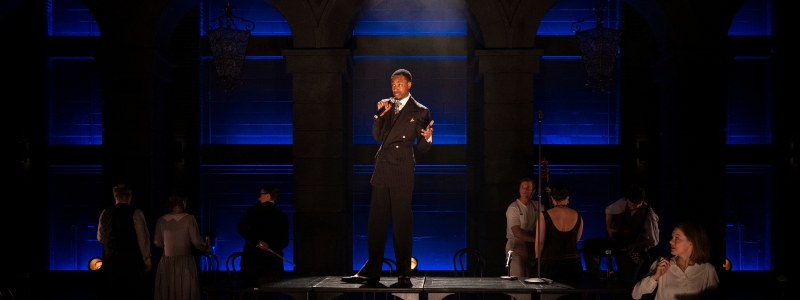Pre-Show Classroom Activity

Invite students to make a zine based on a historical event or period that intrigues them.
As always, please note that some steps of the activity may be condensed, eliminated, or extended based on the needs of your classroom. Although this activity is written for use in a classroom setting, learners of any age and background are invited to participate.
Illustrating History: Zine-Making
Activity Preparation
- Supplies:
- Paper (8.5×11) (one or two sheets per student)
- Scissors
- Markers, colored pencils, etc.
- Magazines and glue sticks, craft supplies, stickers, or access to a printer (optional)
- Set-Up:
- Determine how students may most effectively learn how to make the paper structure for the zine. Below are three resources that may be useful. Consider whether demo-ing the process for students would be the best!
- Depending on what supplies may be available, students may be required to (or choose to!) draw in their zines themselves. If they are reluctant to do so, remind them that they need not be incredible artists to make art.
This activity will take approximately 50 minutes.
Learning Sequence
- Ask students if anyone knows what a zine is. As needed, explain that a zine, (short for “fanzine” or “magazine”) is a “small-circulation, self-published work, often reproduced via photocopier, featuring original or appropriated texts and images, and typically created by an individual or small group.” They are usually inexpensive and sometimes distributed for free or in trade for other zines, goods, and services. A history of zines may be found here for reference. Inform students that in this activity, they will create a zine that tells the story – or a story – about a real event in history. (~4 minutes)
- Let students know that the play Berlin is based off of a graphic novel, which is in turn based on the real events of the Weimar Republic, which was Germany after World War I. (~1 minute)
- Give students a few minutes to brainstorm an event they would like to base their zine on. It could be something far-reaching (like a war) or something more singular (like the death of one person). Also note for students that history is being made all the time. Their event need not be something from 100 years ago. It could be ancient history or in the very recent past. (~3 minutes)
- Once students have brainstormed a short list of events that interest them, have them consider what images and words they might use to tell the story of that event. A zine has eight pages, so they should think of what they might include on each. This would be a great opportunity to share with students what supplies they might have available. (~3 minutes)
- Students may want to tell the story in a linear way, or introduce various players/characters, or tell the event in any way they are inclined to. Encourage them to be creative! It may be helpful or necessary for students to do some quick research about their event, either to determine basic facts and details or to get some inspiration. Give them a few minutes to do so. (~4 minutes)
- Distribute zine-making supplies to students. Demonstrate or guide students through the preparation of their zine paper (See Set-Up instructions for guidance). (~5 minutes)
- Prompt students to make their zines. Once students have finished their zines, invite them to share their work with their peers. Consider displaying them in the classroom! (~30 minutes)
- This activity aligns with the following standards:
- Illinois Arts Learning Standards
- Anchor Standard 1: Generate and conceptualize artistic ideas and work.
- Anchor Standard 2: Organize and develop artistic ideas and work.
- Common Core State Standards
- CCSS.ELA.W.3: Write narratives to develop real or imagined experiences or events using effective technique, well-chosen details and well-structured event sequences.
- Illinois Arts Learning Standards